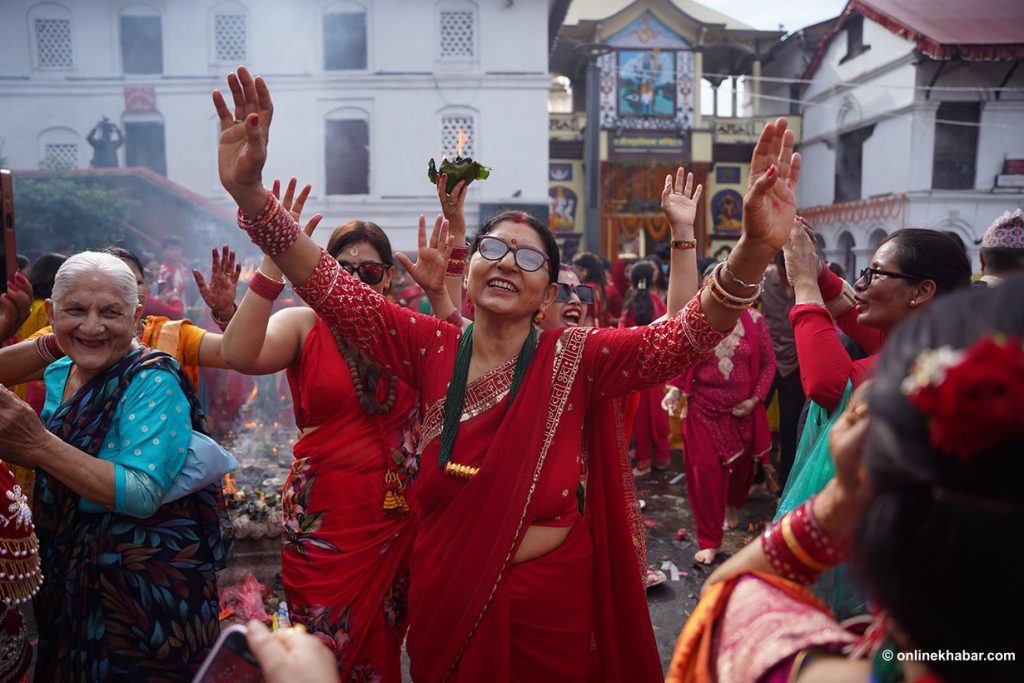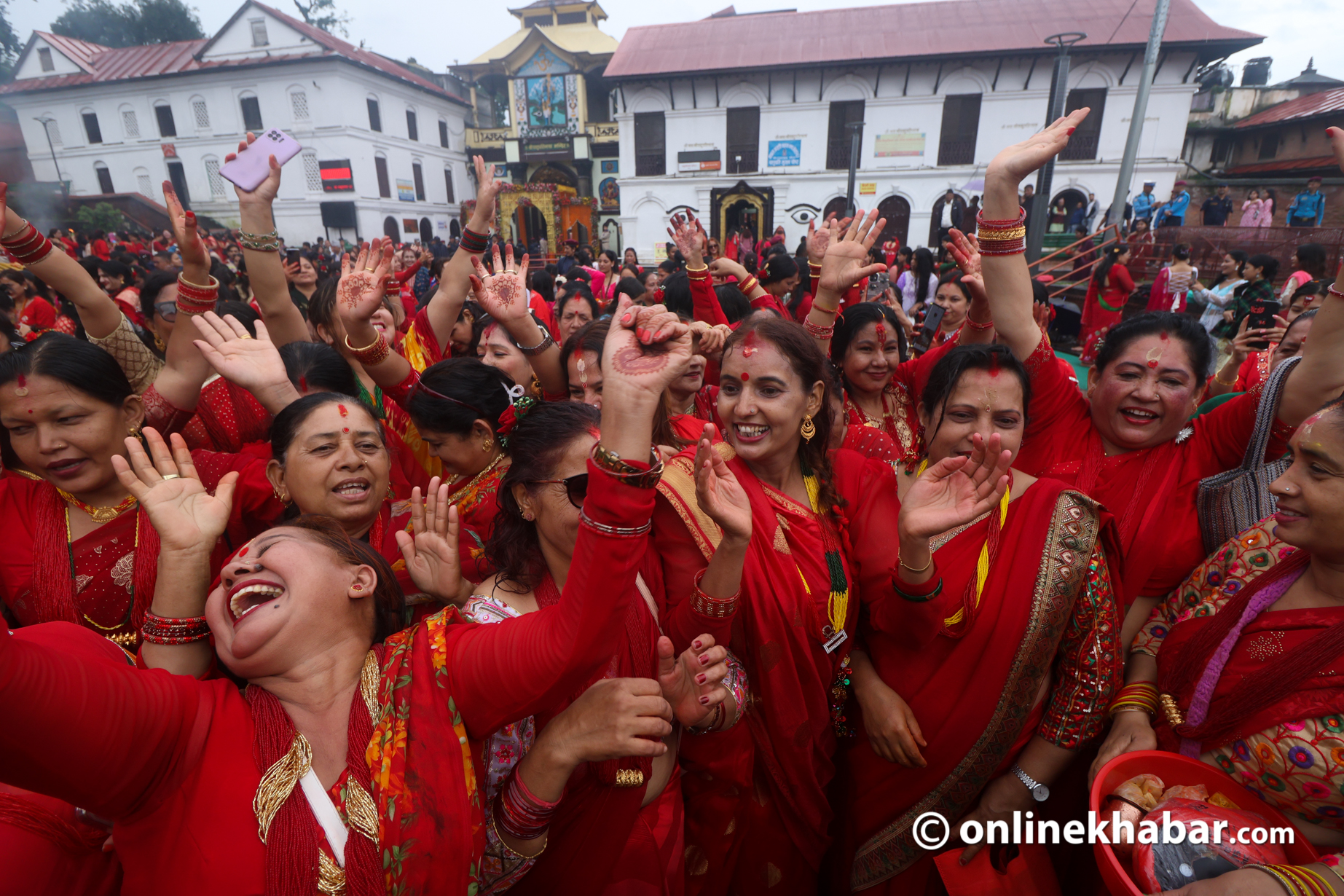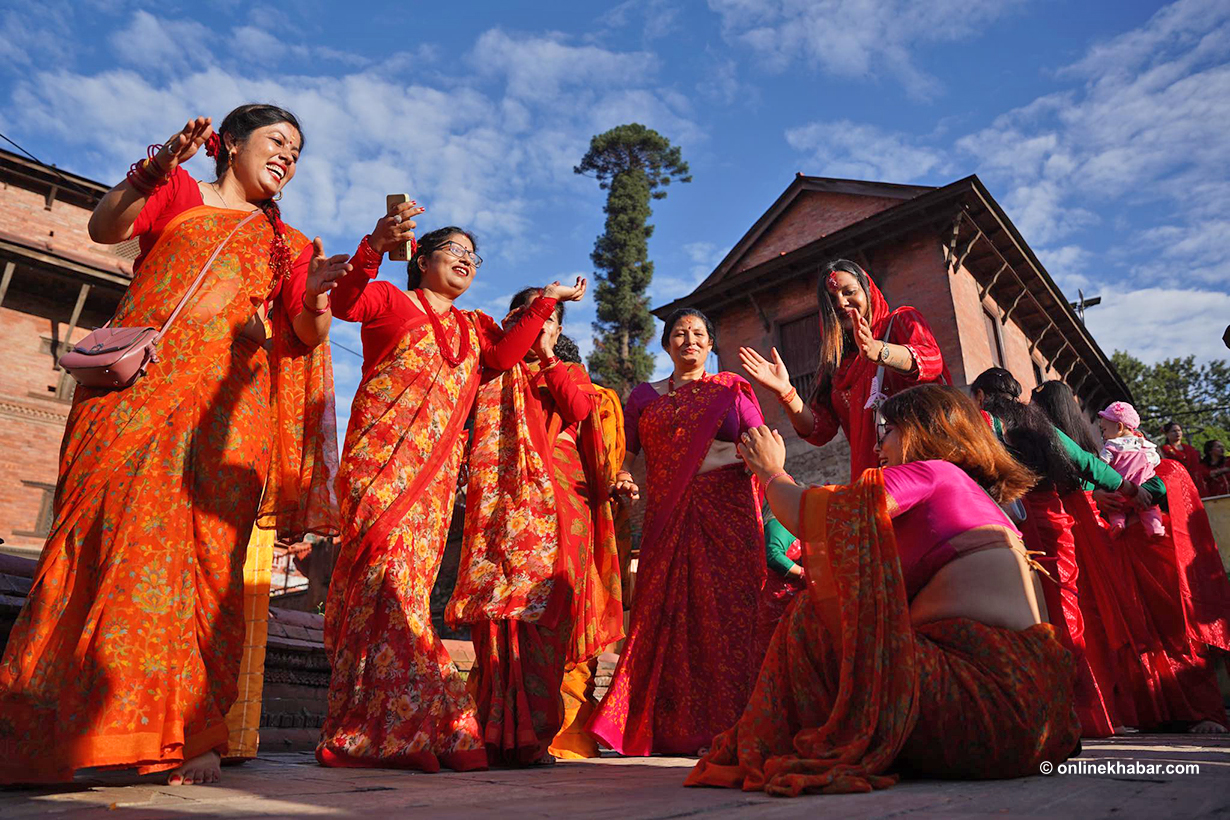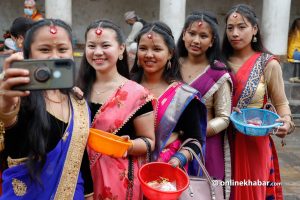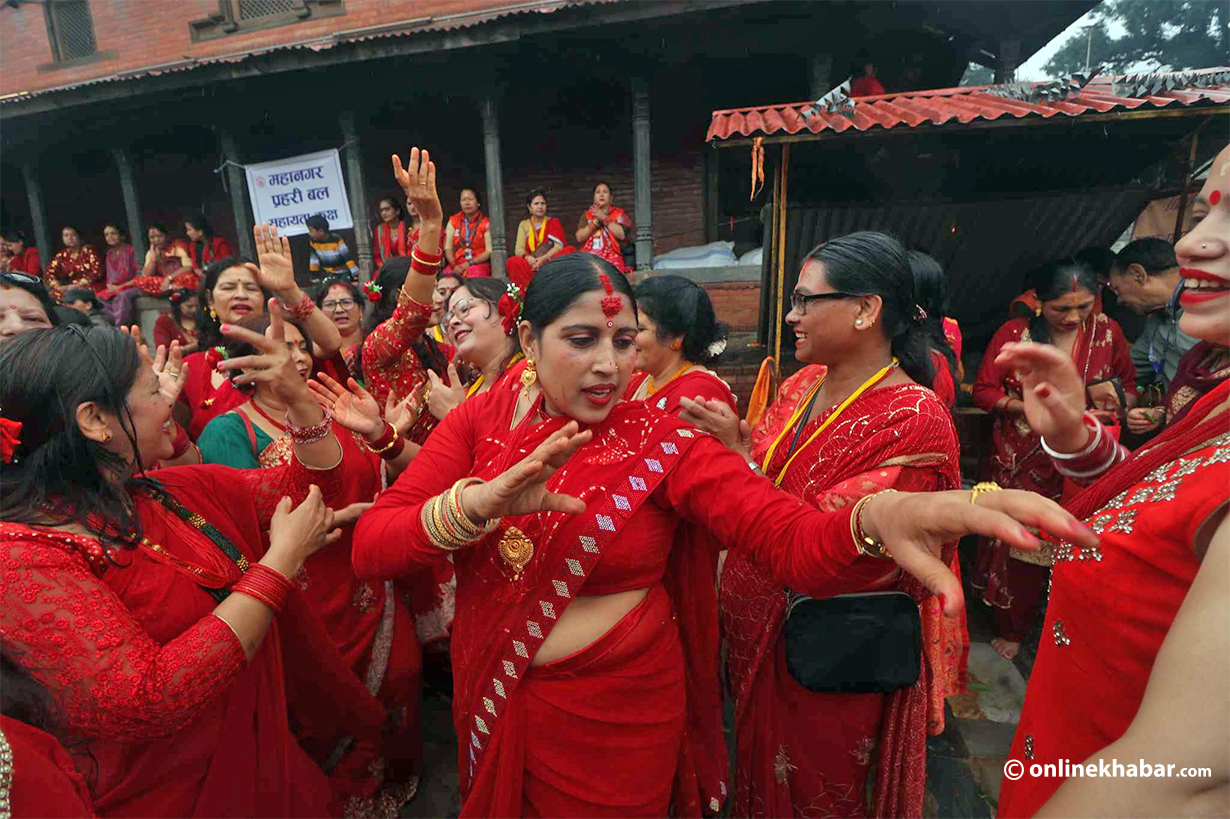
Human civilisation is not a straight line but a cycle. Sometimes it rises to glory, sometimes it declines; sometimes it thrives in harmony with nature, while at other times it neglects nature and faces destruction. From the Stone Age to the modern era, and possibly back again, this cycle reminds us that the foundation of human existence is co-existence with nature.
Festivals and rituals are not merely matters of faith or tradition; they are also deeply rooted in cultural heritage. They are survival codes, practices shaped into culture so that human beings could preserve life across generations. In Nepal, Teej and Rishi Panchami are two such festivals. They hold within them the messages of labour and sacrifice, of male–female balance, of health, purity, and harmony with nature.
In the Stone Age, survival was the central question: How do we live?
People gathered food and hunted, discovered and learned to control fire, and built families and communities while facing daily struggles against hunger, disease, wild animals, and natural disasters.
Their tools were simple and natural, yet they carried the seeds of civilisation.
Teej: Remembering labour, sacrifice, and co-existence
The origin of Teej lies behind the story of lord Parvati and Mahadev. Through long penance, Parvati obtained Mahadev as her husband. By worshipping the man (Mahadev), she gave the world a new vision, that man and woman together form Ardhanarishvara, the inseparable union of strength and devotion.
Before this, among the gods, there was only praise but never worship. Parvati changed that. Through a woman’s devotion, a man’s labour and sacrifice became sanctified, honoured, and worthy of worship.
The ritual of Dar before the fast carries the same symbolism. The food, rich and nourishing, is prepared with men’s labour, the sweat, struggle, and hardship of fields, deserts, battlefields, mountains, and jungles. The next day, women fast strictly, even without water. This is not only a prayer, but also a discipline of the body and a strengthening of the spirit.
At the end, drinking water touched by the husband’s feet completes the ritual. Religious in form, but socially it is the union of labour and devotion, the backbone of civilisation.
Civilisation cannot survive on labour alone or on devotion alone. One without the other is incomplete. Teej reminds us that both are equally necessary.
Rishi Panchami: Science of purification and health
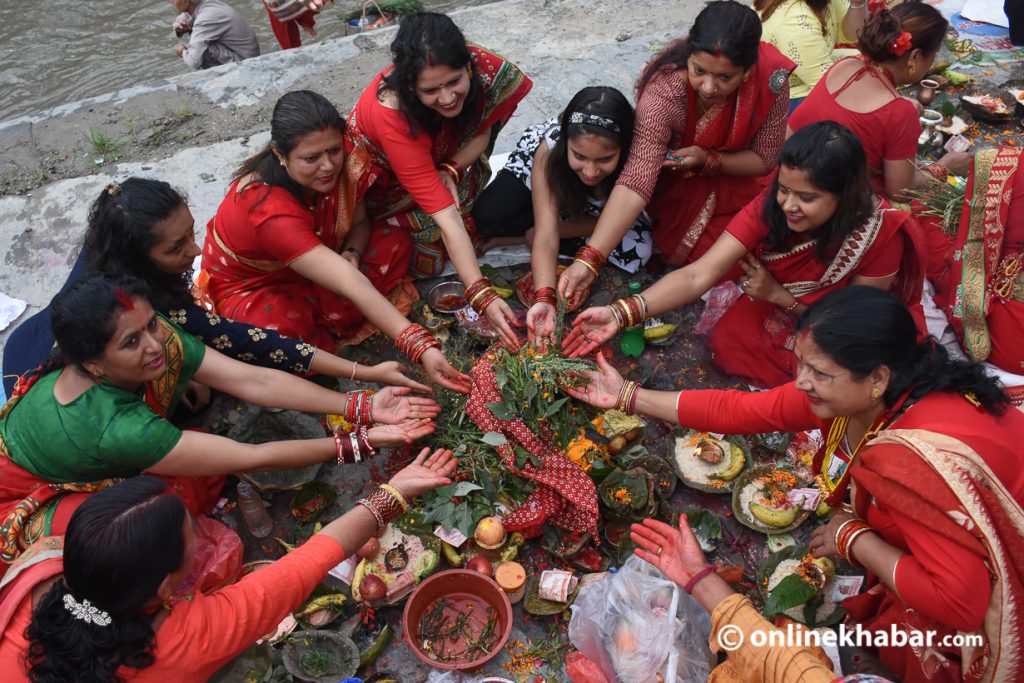
Third day, Rishi Panchami, encodes the ancient science of health and hygiene.
Bathing with datiwan sticks, neem leaves, sesame oil, red clay, and ash purified the body. Tooth-cleaning sticks with medicinal properties. Neem and Khayar with antibacterial, antifungal effects, Sesame oil strengthening hair, a natural shampoo, Clay and ash as natural soap, detoxifying skin and balancing minerals.
As civilisation advanced, chemical substitutes replaced these natural tools. Life became more convenient, but the harmony with nature was lost. And with it came pollution, disease, and imbalance.
Rishi Panchami is also linked to women’s menstrual cycle. Without women’s cycles, no yajna or penance of the sages was considered complete. Thus, this festival secures not just personal purity, but also collective survival.
On this day, the Saptarishi are worshipped: Kashyap, Atri, Vashishta, Vishwamitra, Gautam, Jamadagni, Bharadwaj, each symbolising pillars of civilisation: reproduction, astronomy, governance, social transformation, philosophy, weaponry, and medicine. Even in the sky, the Saptarishi constellation reminds us that civilisation is linked not only with Earth but with the cosmos.
Cycles of ages and warnings of decline
Civilisation moves in cycles: Stone Age, Agricultural Age, Modern Age. But if balance with nature is lost, humanity may again fall back into the struggles of the Stone Age.
Teej and Rishi Panchami warn us: health, harmony, and co-existence are not luxuries, but conditions of survival. Ignore them, and progress becomes temporary.
To call Teej and Rishi Panchami merely “religious festivals” is incomplete. Teej sanctifies male–female co-existence, labour, and devotion. Rishi Panchami encodes health, purification, and natural balance.
Together, they preserve the survival codes of human civilisation.
They remind us: The foundation of life is labour. The essence of labour is co-existence. And the soul of co-existence is unbroken devotion to nature.




